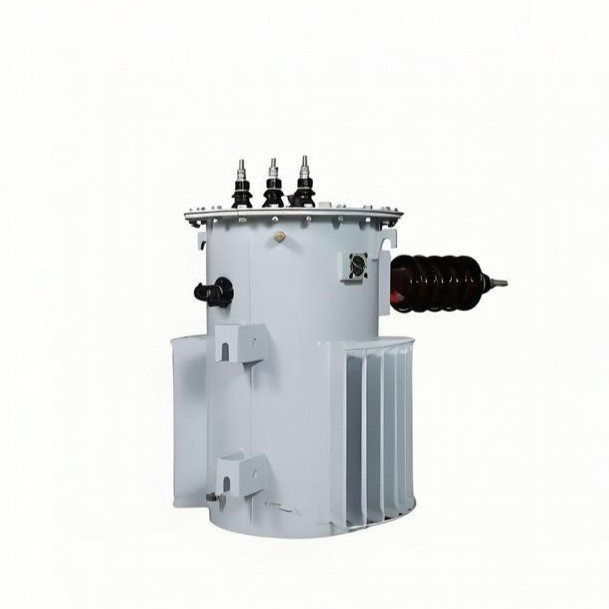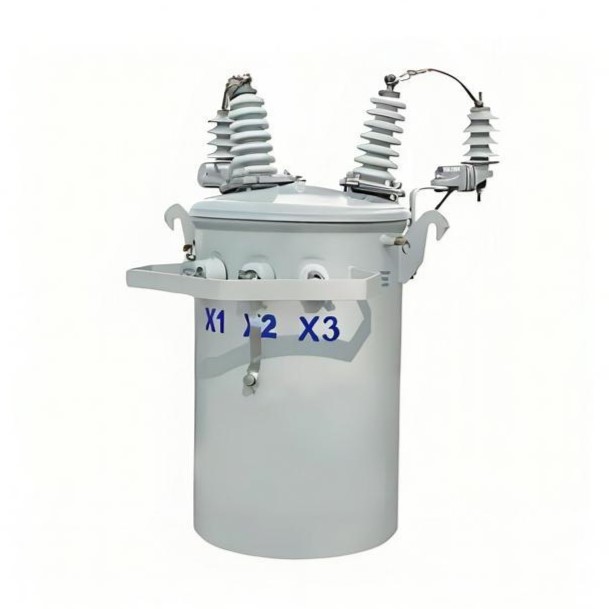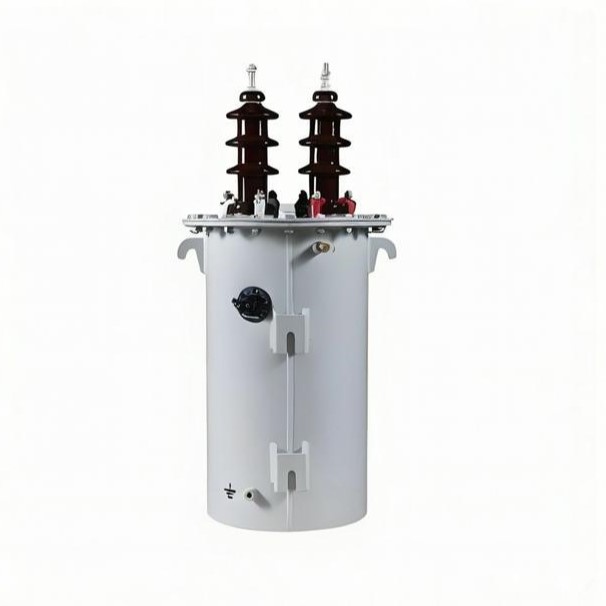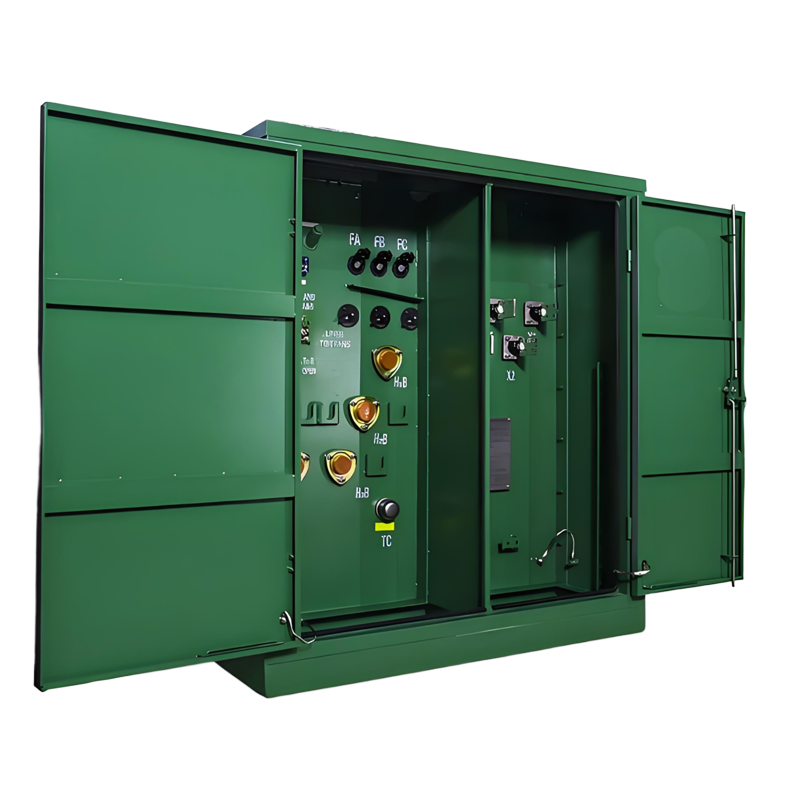Application Solutions for Compact Substations in Urban Power Grids
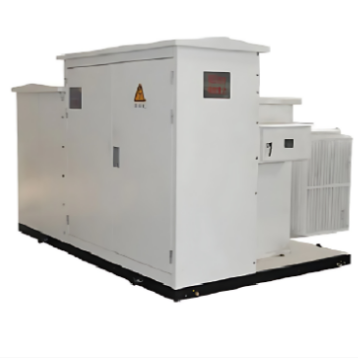
As a vital component of modern power systems, compact substations have become key equipment for urban grid upgrades and transformations due to their advantages of factory prefabrication, easy installation, small footprint, safety, and reliability. With accelerating urbanization, compact substations are evolving from traditional distribution equipment into green, smart energy nodes by integrating renewable energy, energy storage systems, and intelligent monitoring technologies. Based on the latest technical specifications and application scenario analysis, this solution proposes rational configuration and intelligent transformation strategies for compact substations in urban grids, aiming to enhance power supply quality, reduce operational costs, and promote low-carbon grid development.
1. Analysis of Technical Features and Advantages of Compact Substations
1.1 Core Design Philosophy
Utilizes fully enclosed, modular design, integrating high-voltage switchgear, distribution transformers, and low-voltage distribution devices within a single enclosure, achieving a "factory prefabrication + on-site assembly" model. According to the 2025 General Technical Specifications for Compact Substations, the enclosure protection level is ≥IP55, capable of withstanding harsh environments like salt spray.
1.2 Six Core Advantages
- Short Construction Cycle:Installation to commissioning takes only 5-8 days, reducing investment by 40%-50% compared to conventional substations.
- Space Saving:A 4000kVA compact substation occupies ≤300 m², only 1/10th the area of a conventional substation.
- High Safety:Fully enclosed insulation structure with no exposed live parts, achieving "zero electric shock accidents".
- Strong Automation:Supports "Four Tele" functions (Telemetry, Teleindication, Telecontrol, Teleregulation), meeting unmanned operation requirements.
- Flexible Configuration:Modular design adapts to diverse urban grid scenarios.
- Easy Maintenance:Standardized components support rapid replacement, minimizing outage time.
1.3 Technical Structure Classification
|
Type |
Layout |
Key Features |
Volume Comparison |
|
European Compact Substation |
"In-line" Separate Compartments |
High-voltage cabinet, transformer, and low-voltage cabinet in independent compartments. Flexible cabinet selection, but relies on forced ventilation for cooling; larger volume. |
Baseline (Largest) |
|
American Compact Substation |
"Combined" Integrated |
High-voltage load switch, fuses, and transformer integrated in an oil tank. Smallest volume. However, oil-immersed fuses prone to carbonization; maintenance requires outage; lacks sufficient phase-loss protection. |
1/5 - 1/3 of European type |
|
Domestic Compact Substation |
"Improved In-line" Separate Compartments |
High-voltage cabinet, transformer, and low-voltage cabinet in independent but compactly linked compartments. Adds safety interlocks and intelligent monitoring: |
1/3 - 1/2 of European type |
2. Typical Urban Grid Application Scenarios and Configuration Plans
2.1 Residential Area Scenario
- Case:Residential complex (24,000 m², 398 households), distribution transformer capacity 630kVA.
- Configuration Recommendations:
- Type:500-1000kVA, IP55 protection.
- Landscape Design:Enclosure with advertising lightbox panels, rooftop PV installation.
- Reactive Power Compensation:Configured at 40%-50% of capacity, 10-loop automatic compensation device.
- Low-Voltage Outgoing Lines:15-25 loops (including 1-3 spares).
2.2 Commercial Center Scenario
- Case:Shopping mall (109,000 m² complex), using eco-friendly gas-insulated ring main unit (RMU).
- Configuration Recommendations:
- Capacity:1250-2000kVA, ring-main type connection.
- Intelligent Monitoring:5G network slicing + SM4/SM2 encryption, supports AI equipment status analysis.
- Reactive Power Compensation:Configured at 50%-60% of capacity, 20-30 loop power supply system.
2.3 Industrial Park Scenario
- Case:Parking lot charging station, using 1250kVA ring-main type compact substation.
- Configuration Recommendations:
- Capacity:800-2000kVA.
- Energy Storage Integration:15%-20% of main transformer capacity, recommended 6.25MWh liquid-cooled energy storage system.
- Protection Requirements:Enclosure equipped with lifting mechanism to ensure no deformation during transport/installation.
2.4 Comparison of Key Parameters Across Three Scenarios
|
Application Scenario |
Capacity Range |
Connection Type |
Reactive Power Compensation Ratio |
Special Configurations |
|
Residential Area |
500-1000kVA |
Terminal Type |
40%-50% |
Landscape integration, PV self-supply |
|
Commercial Center |
1250-2000kVA |
Ring-Main Type |
50%-60% |
5G network slicing, multi-loop supply |
|
Industrial Park |
800-2000kVA |
Ring-Main Type |
40%-60% |
Energy storage integration, liquid cooling |
3. Economic Benefit Analysis
3.1 Investment Cost Savings:
- Example: 35kV single-transformer substation, 4000kVA scale:
- Compact substation saves over 1 million yuan compared to conventional substation;
- Saves approximately 2700 square meters of land area.
3.2 Operation & Maintenance Cost Reduction:
- Adoption of advanced technologies like oil-free equipment enables condition-based maintenance, saving approx. 100,000 yuan annually in O&M costs.
3.3 Integrated Solution Economics (2025 Trend):
- Falling energy storage technology costs (system cost ≤0.6 yuan / Wh):
- "PV + Compact Substation + Energy Storage" solution can shorten the investment payback period to within 8 years.
Key Data Table
|
Item |
Compact Substation Advantage |
|
35kV/4000kVA Investment |
Saves over 1 million yuan |
|
Land Area Occupied |
Saves approx. 2700 m² |
|
Annual O&M Cost |
Saves approx. 100,000 yuan |
|
Integrated Solution Payback Period |
≤8 years (with energy storage & subsidies) |
4. Compact Substation Implementation Scenarios
4.1 Priority in New Construction:
- Prioritize the use of compact substations in new residential complexes, commercial centers, and industrial parks, leveraging their small footprint and easy installation advantages.
4.2 Urban Grid Renovation and Replacement:
- Gradually replace traditional substations with compact substations in urban grid upgrade projects to enhance grid flexibility and reliability.
4.3 Zero-Carbon Pilot Exploration and Innovation:
- Implement integrated solutions combining PV + Energy Storage + Compact Substation.
